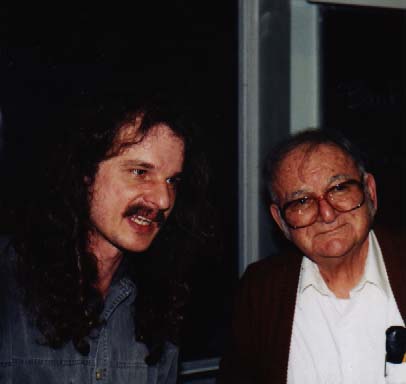
By Arakel Arisian
Staff Writer
The twentieth century has been filled with many tragedies, some well known and publicized while others simply forgotten or ignored. One such tragedy which has gone unnoticed is the Adana Massacre of 1909, which was the murder of 25,000 to 30,000 Armenians and a precursor to the Armenian Genocide of 1915 where 1.5 million were killed.
Hilmar Kaiser, a scholar-in-residence at the University of Michigan – Dearborn, is an authority on the Adana Massacre of 1909. As a part of the Armenian Studies Program’s and the Armenian Students Organization’s April 24th Armenian Genocide Commemorative Activities he spoke to a standing-room only crowd of 150 in McLane Hall on the Fresno State campus. He has done extensive research on the Armenian Question and the oppression of many other nationalities by the Turkish government. Mr. Kaiser was allowed to work in the Turkish archives where he discovered much information about the time before and after the Armenian Genocide. He eventually was barred from the archives because of his work. Dr. Dickran Kouymjian, Director of the Armenian Studies Program, commented in his introduction, ” What makes Hilmar Kaiser’s work so very important is that he is passionately involved in the material and he has a very strong moral sense.”
Adana is a province and a city located in the southeastern coast of Turkey, in the former Armenian Cilicia, north of Lebanon. A fertile alluvial plain, it was a growing, exciting, capitalistic area. There, many nationalities and cultures mixed: Ottoman Turkish, Greek, Macedonian, and Armenian, many of whom were migrant workers. Until 1908 the autocratic Sultan Abdul Hamid ruled Turkey and this assured Muslim power politically and militarily. All this was disrupted when the government was toppled in 1908 and the democratic Ottoman Constitution was reinstated. The result was that Turkish Muslims feared losing power to Christians and other minorities.
The Young Turkish Movement began when the concepts of nationalism and mass politics were introduced. On April 14, 1909 Islamic law was re-established and the Constitution abolished. The attack on the Christians began because they stood for democracy. According to Kaiser, the government officials decided to “eliminate one pillar of Christian democracy, the Armenians who became the Martyrs of Middle Eastern Democracy.” This was easy because the majority of Armenians were migrant farmers or merchants and they were for the most part unarmed and unprepared.
Armenian were murdered everywhere: farms, plantations, villages, and the cities. In the villages and cities the process was simple-get a list of the Armenians, kill them, do a body count, find the ones that were missing and kill them, cross out their names, burn the title deeds, and take the land. Ottoman officers destroyed all bank paperwork and other important evidence so that no one could reclaim anything after the massacres. The Armenians were dispossessed of their businesses, homes, and property.
In his lecture Mr. Kaiser described the many historical positions on the Massacre and the social background in which they occurred. He began with an explanation of a revisionist Turkish view that the Armenians were killed in order to stop an Armenian revolution. This is a common excuse and tactic for the Turkish government to cover the truth. Mr. Kaiser explained that this view did not make sense politically or militarily and that the historical evidence does not support the Revolutionary theory.
After the massacres the Turkish government had a problem: How do you explain the murder of over 25,000 Armenians? Someone had to be held liable, and so to shift blame the government proposed the revisionist Turkish view. Eventually an Ottoman court ruled that there was no attempted revolution. Some individuals were punished and hanged, yet the organizers and leaders of the massacres were left unpunished. It is said that if someone commits a crime and goes unpunished, they will commit that crime again, and that is exactly what happened. Those who orchestrated the Adana Massacre of 1909 also implemented the Armenian genocide of 1915-1923.
Hilmar Kaiser’s lecture on the Adana Massacres of 1909 was very informative and educational. The topic was especially relevant since this year is its 90th anniversary. In the fall semester the Armenian Studies Program will host a conference on the Adana Massacres.
 Hye Sharzhoom Armenian Action
Hye Sharzhoom Armenian Action